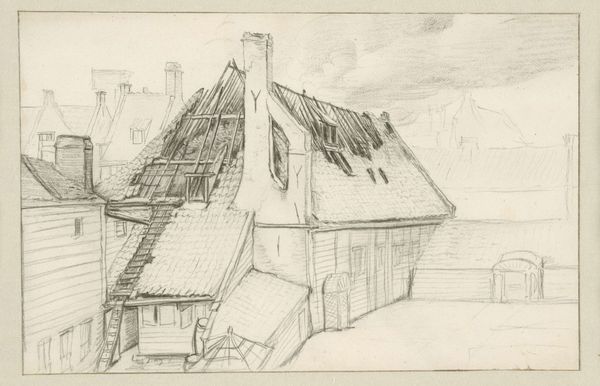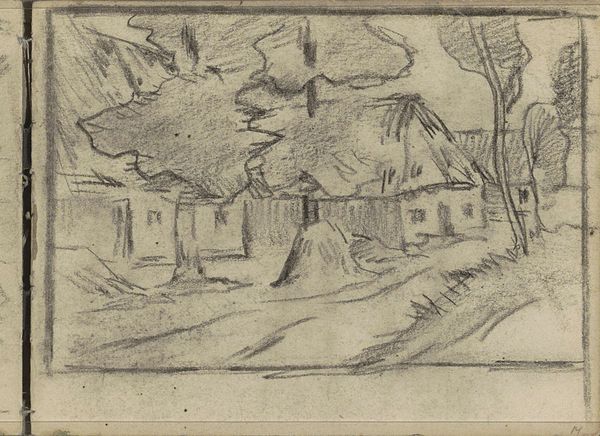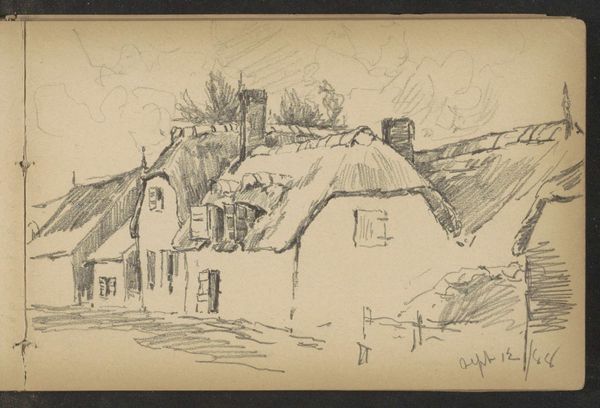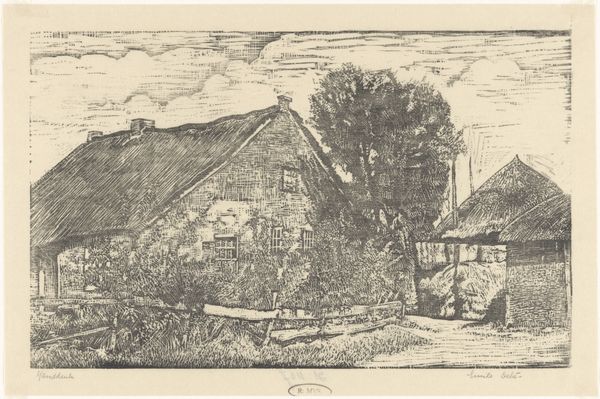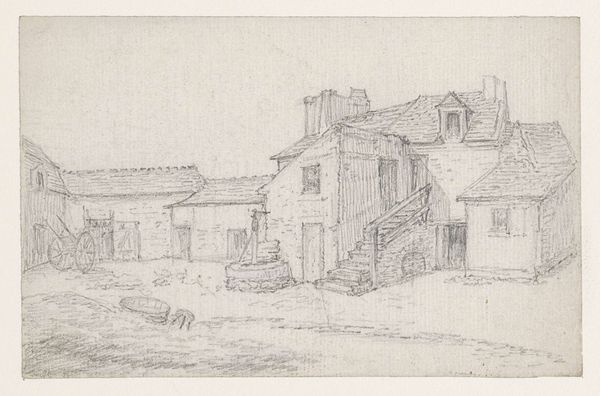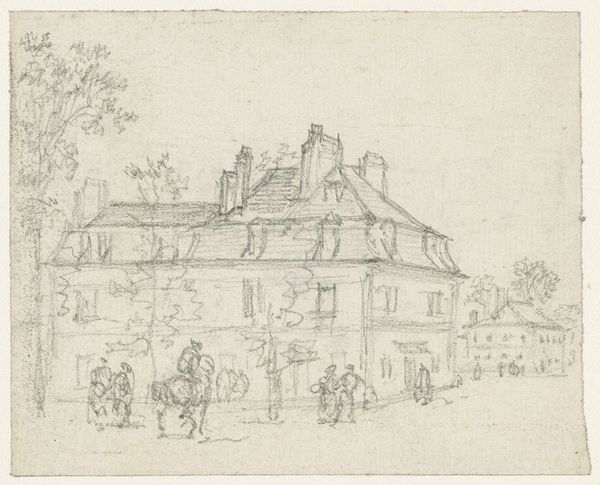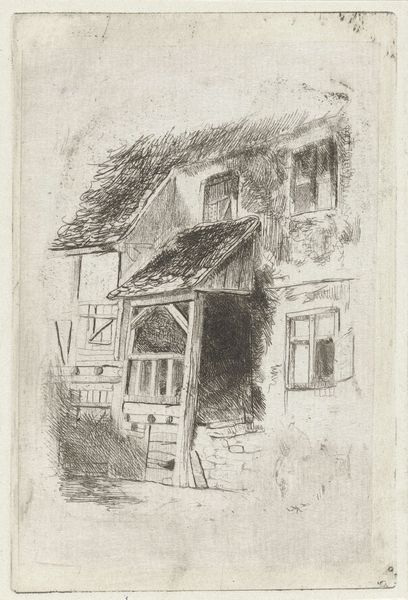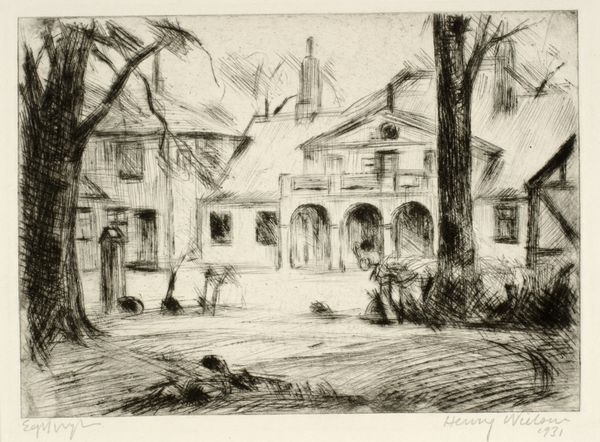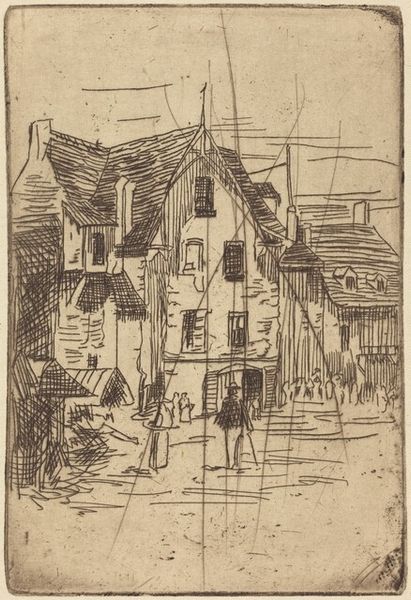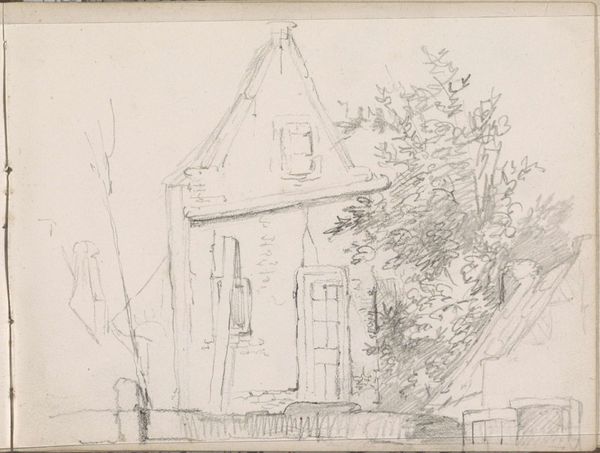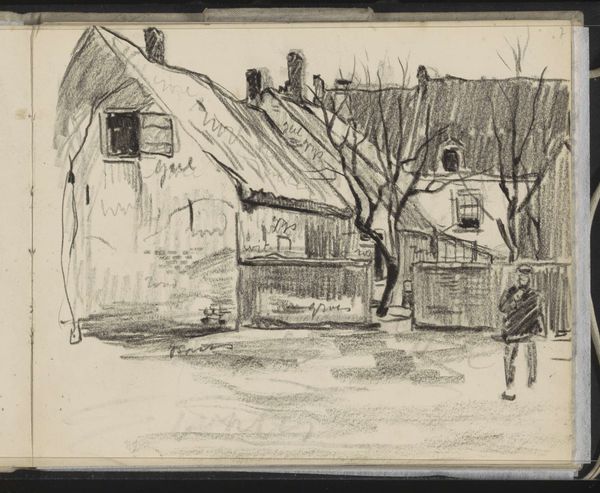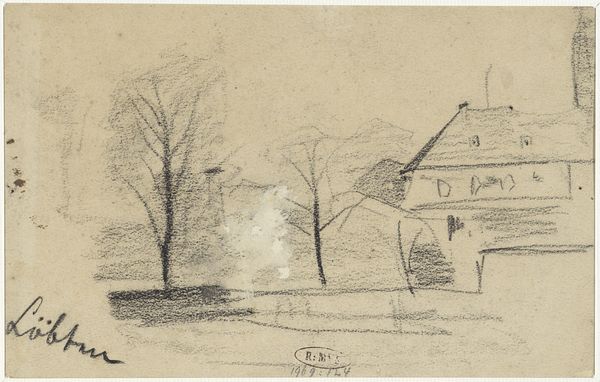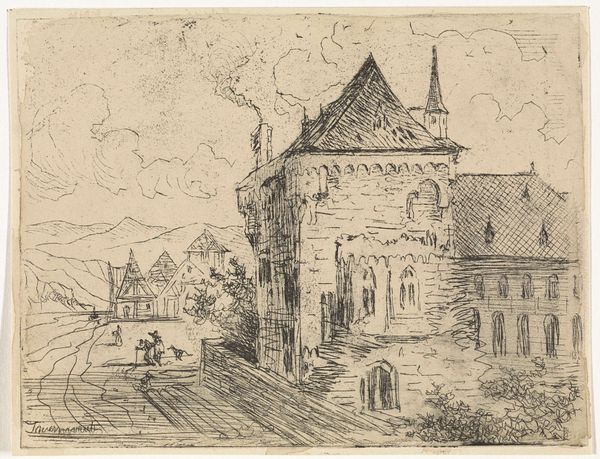
Dimensions: height 114 mm, width 159 mm
Copyright: Rijks Museum: Open Domain
Editor: Here we have Willem Cornelis Rip's "Straat met figuren te Delft," a pencil drawing from around 1907-1908. There’s a quiet intimacy in this cityscape, a candidness achieved through the sketch-like quality of the drawing. What do you see in this piece beyond its impressionistic style? Curator: It's tempting to view this solely through the lens of Impressionism, but let’s consider the social dimensions. Look at the figures in the lower left; how do they occupy, or perhaps navigate, that space? Does this depiction reveal anything about class structures or the lived experiences within Delft at the turn of the century? Editor: I see two figures that appear to be having a conversation. How does this snapshot capture their interactions and contribute to the greater social narrative? Curator: Exactly! The sketch, even in its simplicity, invites us to consider the positionality of the figures within the street. Rip isn’t merely capturing an aesthetic scene; he’s offering a glimpse into the choreography of everyday life. The composition and rapid execution might mirror a need for quick documentation. Can the urgency reflected in the visual, tell us more about why Rip wanted to preserve this place, these interactions? Editor: That's fascinating; I hadn't considered it in that light. Seeing it now, beyond a simple impressionistic work, brings a whole new perspective to how I can appreciate the art and understand its place in time. Curator: Indeed, by looking at these subjects through an intersectional lens—analyzing gender, class, and the sociopolitical moment—we start unpacking richer, more compelling stories held within. Considering historical context in Rip’s drawing has enabled a deep exploration that would otherwise have been overlooked.
Comments
No comments
Be the first to comment and join the conversation on the ultimate creative platform.

